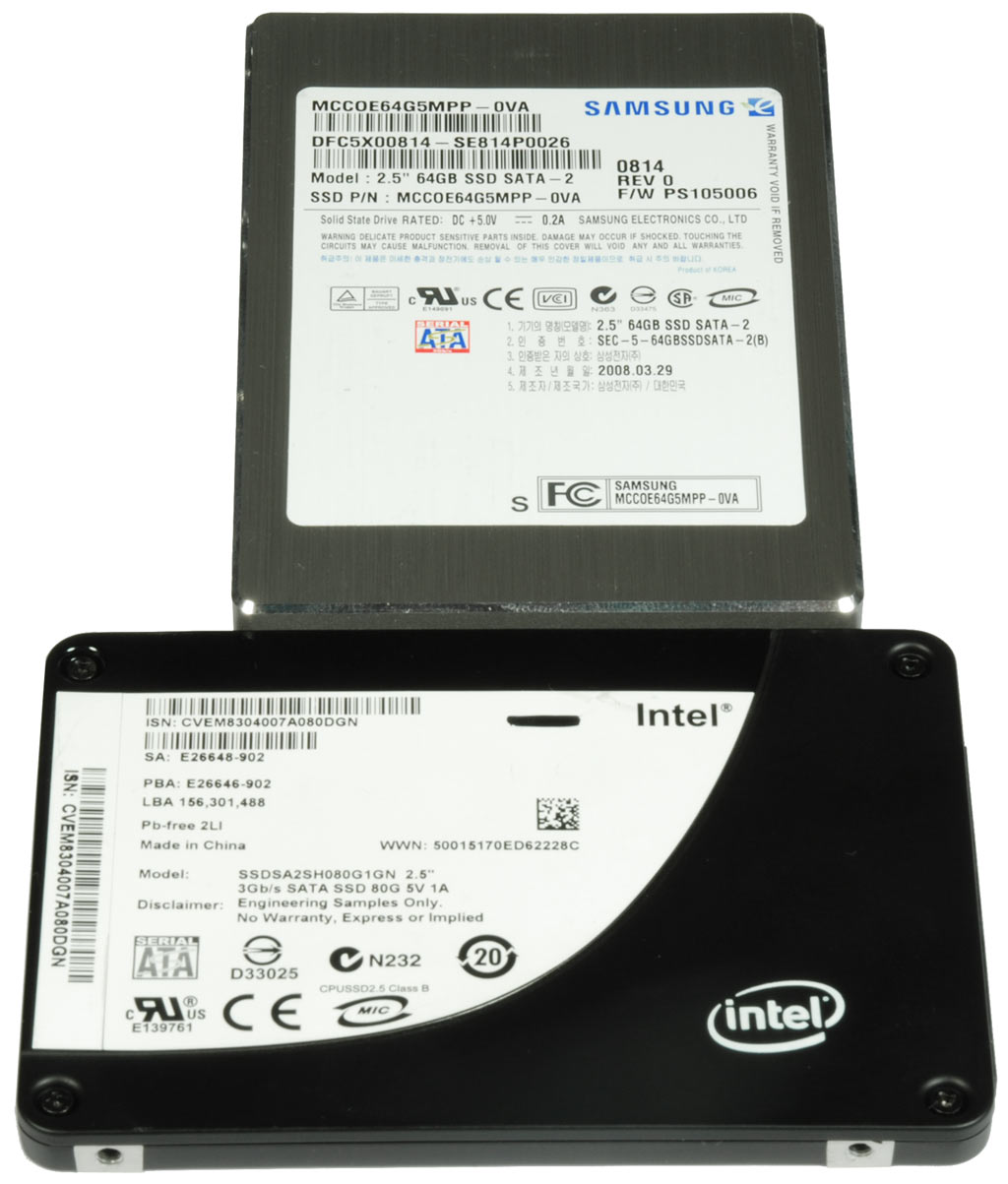The SSD Workload Performance Analysis
Digging Deeper...
We took two Intel flash SSDs—the X25-M at 80 GB for enthusiasts and the X25-E 32 GB professional series—as well as Samsung’s latest PB22-J 256 GB drive, to check how performance changes as we bombard the drives with changing workloads.
We decided not to do tests with most of the drives full, as enthusiasts will try to avoid using more capacity than necessary on their fast system SSD, putting most data on complementary hard drives. Instead, we focused on alternating I/O and sequential throughput tests on the SSDs, which turned out to be a good way to push existing performance limits.
We were among the first to notice varying SSD performance when we reviewed Intel’s flash SSD, the 80-GB X25-M in September 2008. While the X25-M would typically provide an average of 70+ MB/s in sequential write throughput, changing between heavy I/O operations and our sequential benchmark resulted in drastically reduced write performance. In fact, write throughput dropped to 10-30 MB/s, and it took a while until the drive “recovered,” meaning that the flash controller was able to finally adjust to the new workload conditions.
We discovered that these observations are also valid for all other high performance MLC flash SSDs, and many SLC SSDs as well. The X25-E SLC SSD was included in an effort to look at how performance varies on this particular model, as it is based on the same design as the X25-M.
What Intel Did
Knowing about the circumstances we first covered in September 2008, and under which PC Perspective analyzed in great detail in February, Intel has released a firmware update for its X18-M (1.8”) and X25-M drives. You can download it on the support section of the Intel Web site.
Of course we ran the X25-M tests both with the old firmware 8160 and the new version 8820. Needless to say the new firmware made a huge difference in performance variance with heavily-changing workloads. You can flash the firmware yourself, but it is recommended that you back up your data before doing so.
Get Tom's Hardware's best news and in-depth reviews, straight to your inbox.
Current page: Digging Deeper...
Prev Page Performance Hazards For Flash SSDs Next Page Test Setup And Test Procedure

